Tom's Guide Verdict
At $228, the OnePlus Nord N300 may seem appealing as a super cheap smartphone option. Don’t be fooled, though, as disappointing performance, subpar cameras, and a terrible update policy prove you get what you pay for.
Pros
- +
Super affordable
- +
90Hz refresh rate
- +
Great battery life
Cons
- -
Disappointing display
- -
Terrible update policy
- -
Underwhelming performance
- -
Subpar cameras
- -
Limited to T-Mobile
Why you can trust Tom's Guide
Android version: 12 with OxygenOS 12
Display: 6.56-inch IPS LCD (1612 x 720)
Refresh rate: 90Hz
CPU: MediaTek Dimensity 810
RAM: 4GB
Storage / Expandable: 64GB / Yes
Rear cameras: 48MP (f/1.8) main, 2MP (f/2.4) depth
Front camera: 16MP (f/2.0)
Battery: 5,000 mAh
Battery life (Hrs:Mins): 13:13 (90Hz), 12:51 (60Hz)
Charging: 33W
Size: 6.5 x 3 x 0.31 inches (163.8 x 75.1 x 8 mm)
Weight: 6.7 ounces (190 g)
Colors: Midnight Jade
With its attractive price, you might be tempted by the OnePlus Nord N300. I had hoped it could join the relatively small ranks of the best cheap phones under $300, but I ultimately came away disappointed by OnePlus’ latest budget device.
The Nord N300 lasts quite a while on a charge — earning itself a spot on our list of the best phone battery life — and it looks quite nice for a $228 phone, but its MediaTek chipset struggles with even the most basic tasks. The subpar cameras just can’t keep up in basically every scenario I tested. And OnePlus’ unacceptable Nord N update policy destroys any recommendation I could make for this handset.
As you’ll see in this OnePlus Nord N300 review, you should avoid this phone. Beneath its pretty veneer, it’s an underwhelming device that proves you get what you pay for.
OnePlus Nord N300 review: Price and availability
One of the Nord N300’s strengths lies in its price. It costs just $228 at T-Mobile or Metro by T-Mobile, which is great. It’s hard to get a decent phone for less than $300, and the Nord N300 sure tries to prove that argument wrong.
You can only buy this device from T-Mobile for now, but like the OnePlus Nord N20 earlier this year, the Nord N300 might launch to general availability in the coming months.
As for its competition, the OnePlus Nord N20, an inarguably better handset in most areas, clocks in at $299. Verizon customers can turn to the $299 TCL 30 V. Then there’s Motorola with the Moto G Power (2022) at $199.
OnePlus Nord N300 review: Design
The Nord N300’s design takes a drastic step away from the OnePlus Nord N200. Instead, it looks a lot more like the Nord N20, which I really like. This doesn’t seem like a cheap phone from a distance, and even up close, the N300 certainly looks like it’d cost way more than it does.
Get instant access to breaking news, the hottest reviews, great deals and helpful tips.
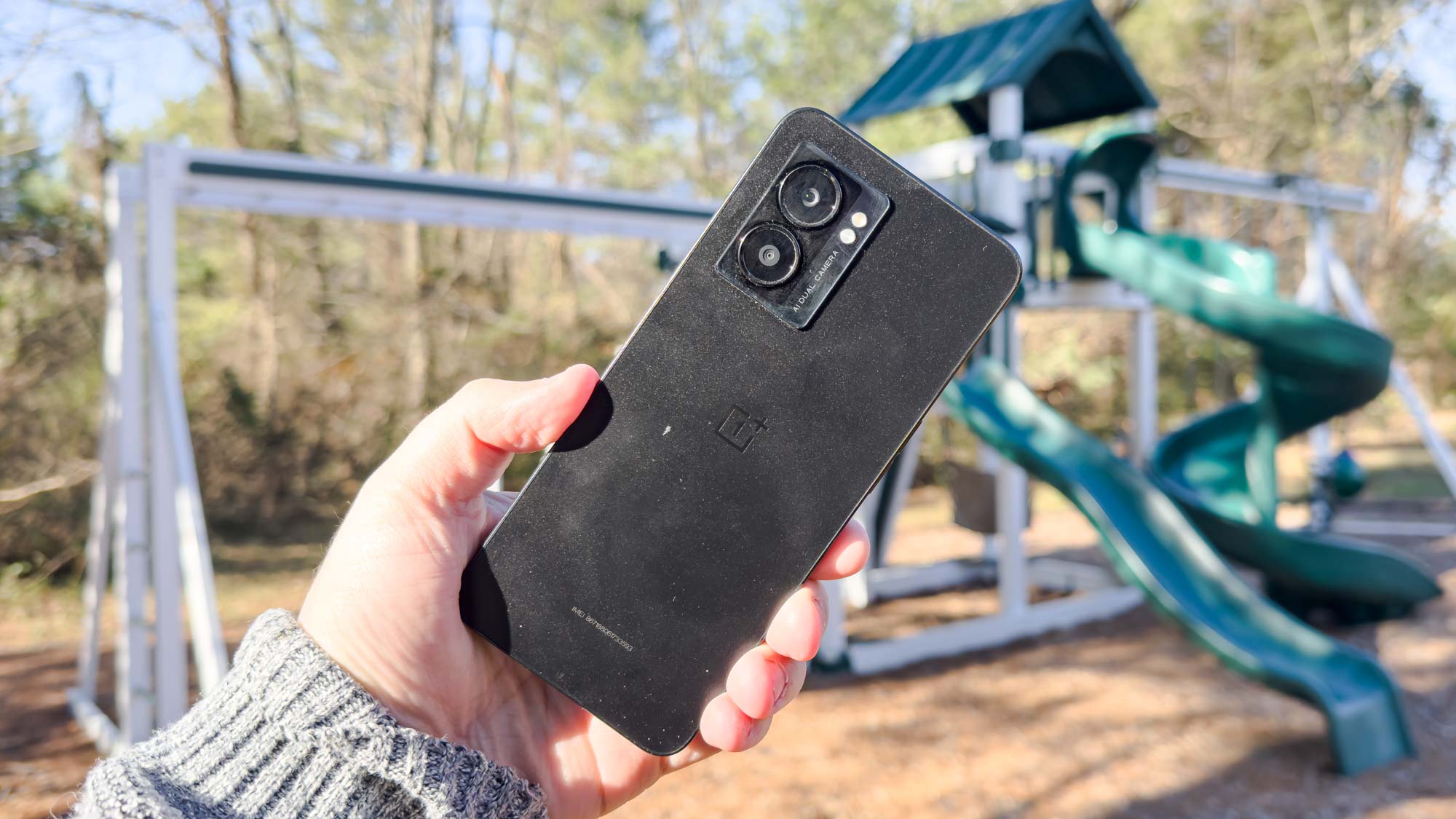
It’s a large device at 6.5 inches tall and 3 inches wide. Considering that it packs a 5,000 mAh battery, the Nord N300 is surprisingly slim at 0.31 inches. The plastic frame means it doesn’t have a loft of heft, weighing just 6.7 ounces.

Even though the Nord N300 looks like a cheaper version of the Nord N20, I think it’s a step above anything else at this price. Similar budget phones from Motorola look pretty outdated in comparison. Even TCL has some work to do in the design department.
OnePlus Nord N300 review: Display
Here’s where the Nord N300 starts to fall apart. The 6.56-inch 720p LCD does not look good, even with its 90Hz refresh rate, an unusual feature in a phone this inexpensive. The colors appear flat, the viewing angles suffer, and images do not seem all that crisp.
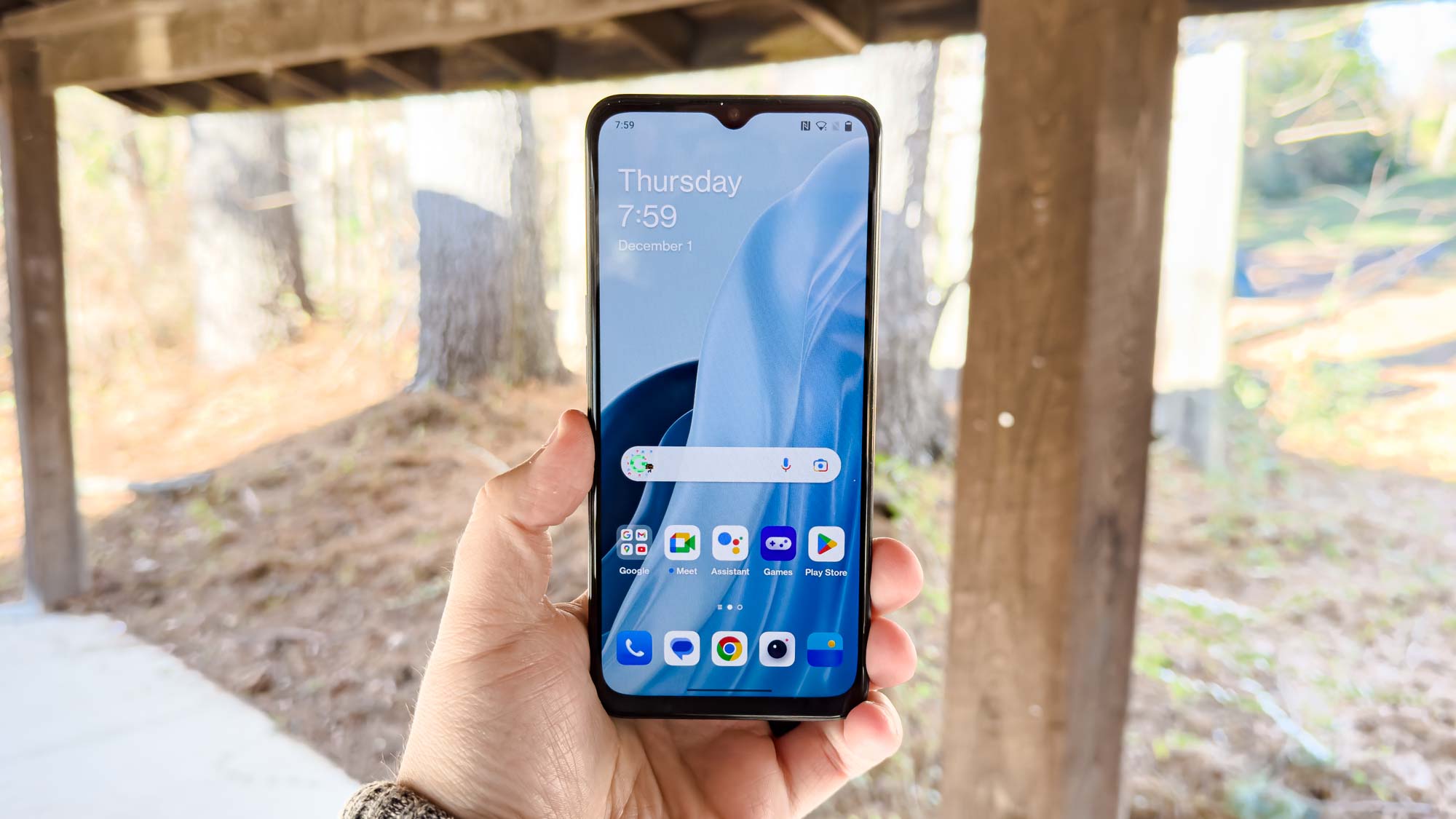
The display’s auto brightness also struggles to keep up with lighting changes, taking noticeable seconds before brightening or darkening. The touchscreen also has trouble, refusing to accept inputs at times if you don’t apply enough pressure — and the phone wants more than I’m used to.
Here’s how the Nord N300’s display compares to screens on other phones in its price range.
| Row 0 - Cell 0 | Nord N300 | Moto G Power (2022) | Nord N200 |
| Display size | 6.56 inches | 6.5 inches | 6.49 inches |
| sRGB(%) | 161 (Vivid) / 114 (Natural) | 94.6 | 160.7 |
| DCI-P3 (%) | 114 (Vivid) / 80.7 (Natural) | 67 | 113.8 |
| Delta-E | 0.25 (Vivid) / 0.22 (Natural) | 0.23 | 0.26 |
| Peak brightness (nits) | 573 | 507 | 415 |
Generation-over-generation, the only difference between the Nord N300 and the Nord N200 comes down to brightness. 573 nits is pretty dim, especially outdoors, but not nearly as bad as the Nord N200’s 415 nits. It appears that OnePlus used the same panel as last year, just boosting the brightness.
Compared to the Moto G Power (2022), the Nord N300 is significantly better when it comes to colors and brightness, even if the Delta-E color accuracy scores (where 0 is perfect) line up pretty well.
In practice, this display disappointed me. Not only did I have a really hard time seeing it in direct sunlight, but it made my favorite content like Blade Runner 2049 look drab and boring. Even the trailer for John Wick 4 seemed dull and lifeless. Aside from the 90Hz refresh rate, the Nord N300 doesn’t offer more than a passable display.
OnePlus Nord N300 review: Cameras
The Nord N300 sports a single 48MP rear camera with an added 2MP depth sensor. The latter’s efficacy is dubious at best, serving more as fluff so that OnePlus could say this phone has two cameras. Around front is a 16MP selfie cam.

To measure the Nord N300’s camera performance, I compared its photos to ones shot by the the Nord N20. That phone may cost a little more, but the difference in photos shows you one of the reasons why.
Starting off with this shot of a pond in bright morning daylight, both images look quite drab. While I like the colors in the Nord N300’s picture more, the Nord N20 did a better job with the sun. Even though the scenery is in the dead of autumn, I think the Nord N300 disappointed in representing what my eyes saw.
Staying outside, this graffitied trash can also doesn’t look all that great in both shots. However, I think the Nord N300 did better here with the colors and direct sunlight on the subject. Even the background looks decently detailed. Everything looks flat and dull in the Nord N20’s image. The cheaper phone wins here.
Heading indoors, both pictures of a bowl of fruit in my kitchen are bad. The Nord N300 played way too much into the warm overhead lighting. It makes the fruit colors look all wrong, sickly in some cases. The Nord N20 seemed to have exposure and focus problems. Some of the fruit looks too dark, even with the copious amount of light in the room. The Nord N300 wins again.
Portraits turned out to be disappointing, while also surprising me. Both phones did a nice job with their bokeh effects, but I think the Nord N300 comes out on top with its better colors. The Nord N20 is too soft and cool, making me look unnaturally pale. It also had trouble with the warmth of the overhead lighting, while the Nord N300 did a better job.
At night, the differences stand out immediately. The Nord N300 is significantly brighter than the Nord N20. The latter’s image is so dim that I can barely make out most of the fruit. While the Nord N300’s shot is pretty bad on its own, you can at least make each piece. Washed out it might be, but this picture trumps the Nord N20’s attempt.
Finally, for selfies, the Nord N300 clearly wins. I look much more natural with less face smoothing than the Nord N20’s shot, even if the picture looks too red overall. The Nord N20’s picture is far too cool and makes me look ghostly. It’s horribly unflattering. Yet again, the cheaper Nord N300 wins, but not by much.
Don't be fooled by the Nord N300's toppling of the Nord N20 into thinking the new OnePlus phone is a viable camera phone option. It sorely lags cameras on mid-range models like the Pixel 6a. OnePlus has made a camera phone where the sky is definitely not the limit.
OnePlus Nord N300 review: Performance
With a MediaTek Dimensity 810 running the show, the Nord N300 is no performance champ — quite the opposite, in fact. MediaTek chips, at least on the low end, often fail to match their Qualcomm counterparts.
The Nord N300 struggles with even the most basic tasks. Even activities such as typing too quickly or scrolling too fast introduced noticeable lag. (The latter being ironic given the 90Hz refresh rate.) Our benchmark results posted below back up my experience.
| Row 0 - Cell 0 | Nord N300 | Moto G Power (2022) | Nord N200 |
| CPU | Dimensity 810 | Helio G37 | Snapdragon 480 |
| Geekbench 5 (single-core / multicore) | 595 / 1769 | 177 / 1011 | 508 / 1602 |
| 3DMark Wild Life Unlimited (FPS) | 8 | N/A | 6 |
| 3DMark Wild Life Extreme Unlimited (FPS) | 2 | N/A | 2 |
When going into phones this cheap, you have to temper expectations. I will note that the Nord N300 not only outperformed its predecessor, but also stomped on the Moto G Power (2022). The delta between them on Geekbench is pretty wild. However, despite the better numbers than the other phones at this price point, it is still a subpar experience.
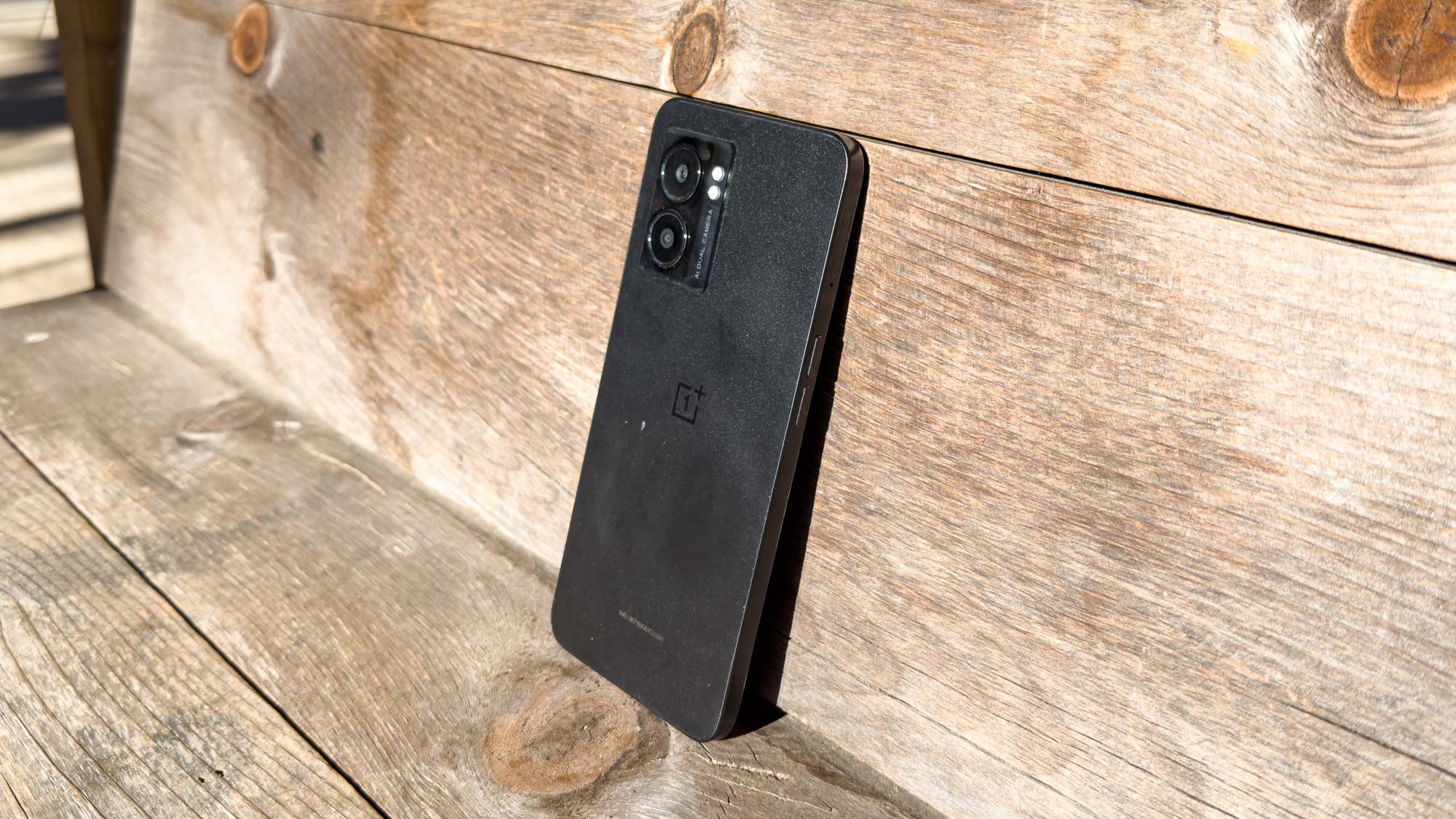
The Moto is so low-end that it doesn’t contain the requisite software libraries to run the 3DMark graphics benchmark. Of course, the Nord N300 could not maintain a remotely playable frame rate, just like the Nord N200. Anything even a little graphically-intensive is unplayable on the Nord N300. This phone could not handle any of the games I threw at it. Even Geometry Dash was hard to play at times due to an inconsistent frame rate.
The Nord N300 could not complete our Adobe Premiere Rush 4K-1080p transcode tes, failing every time we tried to run it. At least the Moto G Power (2022) got through it, even though it took over 20 minutes to do so. (Most flagships complete this test in under 1 minute, while many budget phones hover around 1 to 2 minutes.) Don’t expect this OnePlus phone to handle demanding tasks.
OnePlus Nord N300 review: Battery life and charging
The Nord N300 almost redeems itself with its battery life. This phone can go for a very long time, partially due to the huge 5,000 mAh power pack — and the underpowered processor. I had a hard time killing this phone in normal day-to-day use, and our battery life tests corroborate that.
Here’s how the Nord N300 fared.
| Row 0 - Cell 0 | Nord N300 | Moto G Power (2022) | Nord N200 |
| Battery | 5,000 mAh | 5,000 mAh | 5,000 mAh |
| Battery life (Hrs:Mins) | 13:13 (90Hz) / 12:51 (60Hz) | 13:15 (Auto) / 13:20 (60Hz) | 10:28 (90Hz) / 10:19 (60Hz) |
| Charging speed | 33W | 10W | 18W |
| Recharge percentage (15 mins) | 26% | 10% | 16% |
| Recharge percentage (30 mins) | 48% | 20% | 32% |
At just 2 minutes shy of the Moto G Power (2022)’s result, the Nord N300 certainly impresses with its longevity. The phone beat its predecessor by nearly 2 hours on this test. That’s a generational leap I love to see.
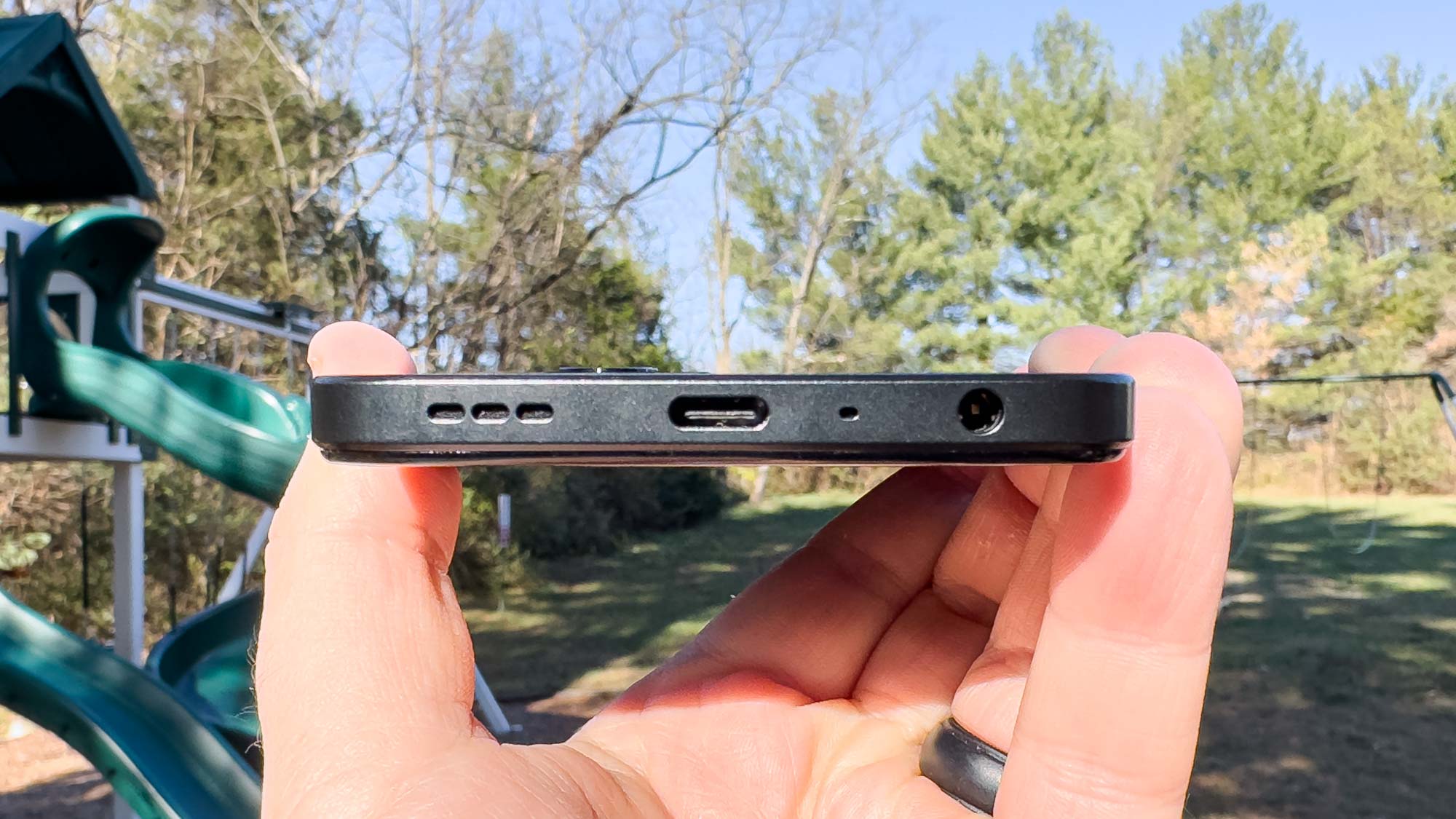
With 33W fast charging, the Nord N300 can recharge to almost 50% in 30 minutes — that’s a substantial upgrade over the Nord N200’s 18W. It has become more common for super cheap phones to go for considerably long times on a single charge. It’s good to see the Nord N300 counts among those devices.
OnePlus Nord N300 review: Software
The problems with the Nord N300 don’t stop with hardware. The phone ships with Android 12, an OS that’s more than a year old. That alone is a problem for me, but then OnePlus decided it was a good idea to offer only a single platform update for the Nord N300. That’s Android 13, which Google launched in August (with many months of betas before that).
So whenever OnePlus gets around to pushing out the Android 13 update to the Nord N300, that’s it. The phone won’t receive any Android updates after that. It’s not even a year’s worth. At least you can expect two years of security patches.
As for the software itself, it’s OxygenOS 12, OnePlus’ take on Android. The company has slowly gotten away from its roots in more ways than one, OxygenOS included. It feels remarkably similar to what you’d find on an Oppo phone — a problem that has gotten much worse in OxygenOS 13.
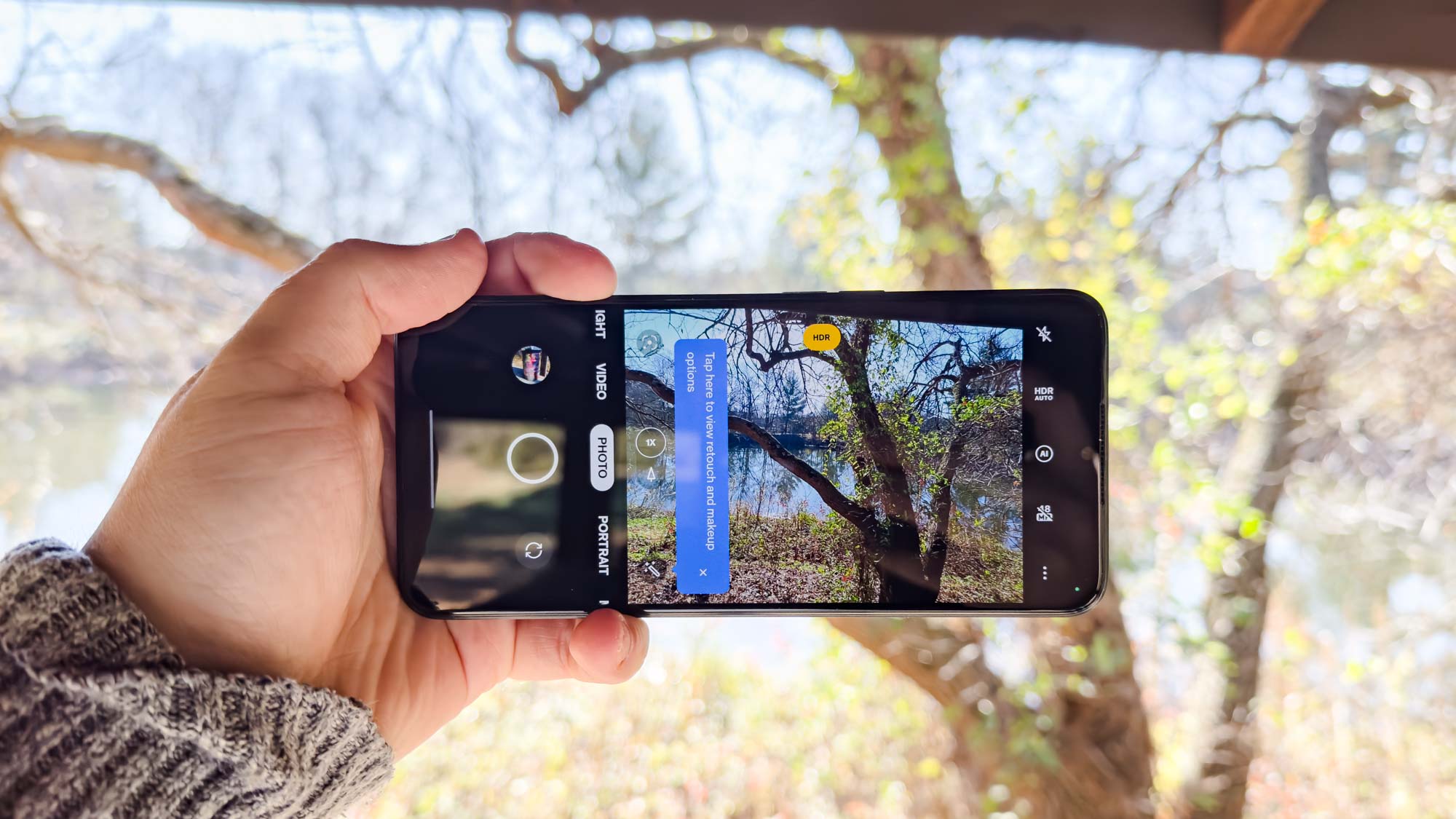
OxygenOS 12 looks pretty nice, though it often feels sluggish thanks to the Nord N300’s subpar performance. I noticed many hiccups in animations, stutters in some of the Settings menus, and random lag spikes.
I don’t recall as many of these issues with the Nord N200 last year, but that was a different software version. OxygenOS 12 may not be all that well optimized for the Nord N300’s meager chipset.
OnePlus Nord N300 review: Verdict
You should skip the Nord N300 — OnePlus managed to torpedo my already low expectations for a Nord N handset with this device. It offers little in the way of what most people want in a smartphone, except that it has impressive battery life. I urge you not to be fooled by the attractive $228 price, however. It’s not what it seems.
Furthermore, the phone is currently locked to T-Mobile and Metro by T-Mobile. If you’re on AT&T or Verizon (or an MVNO that uses those networks), you’ll have to wait for a potential wider launch. That’s what happened with the Nord N20 earlier this year.
There’s a reason why the saying “you get what you pay for” almost always rings true, and the Nord N300 proves it. Sure, this OnePlus device is cheap, but I think most will come to regret purchasing it.

Jordan is the Phones Editor for Tom's Guide, covering all things phone-related. He's written about phones for over six years and plans to continue for a long while to come. He loves nothing more than relaxing in his home with a book, game, or his latest personal writing project. Jordan likes finding new things to dive into, from books and games to new mechanical keyboard switches and fun keycap sets. Outside of work, you can find him poring over open-source software and his studies.

